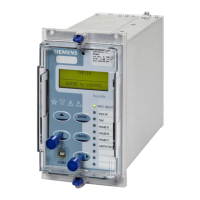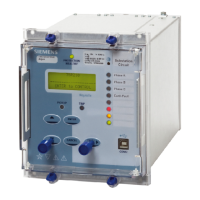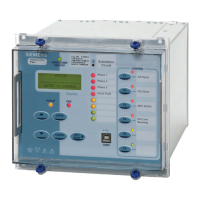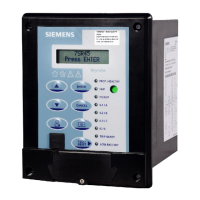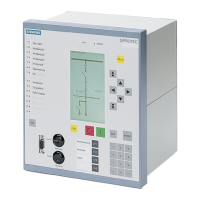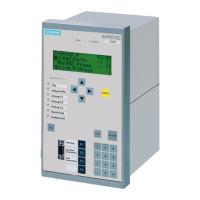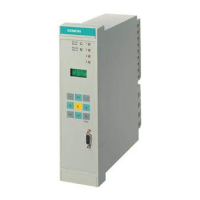7SR18 Applications Guide
Unrestricted ©2018 Siemens Protection Devices Limited Page 25 of
The maximum source fault level and X/R can then be calculated. The two cases are studied separately. The first
considers the maximum source X/R and the second the maximum fault level.
Example
UCase 1 – Maximum Source X/R
The source fault level to use in the CT calculations = 700 / 50 = 14 kA.
Therefore a check of each feeder should be done with an X/R of 50 and a fault level of 14 kA.
UCase 2 – Maximum Fault Level
The source X/R to use with the maximum source fault level = 700 / 40 = 17.5
The second case should be done with an X/R of 17.5 and a fault level of 40 kA
For the above example the three-phase fault level may be quoted in MVA instead of kA. In this case, the fault
current can be calculated by using:
3-Phase Fault MVA / (Rated Voltage Line Voltage x root 3)
System positive sequence impedance information is required in order to accurately estimate both values. The
calculation process needs to evaluate the following:
X/R used in CT equation = (X
S
+ X
F
) / ( R
S
+ R
F
)
The source reactance (X
S
) and resistance (R
S
) will be fixed, but the feeder reactance (X
F
) and resistance (R
F
) will
increase with the length of the circuit. This means the line impedance dominating the overall X/R for the external
fault as the circuit length increases.
Several sources feeding the busbar will have the affect of magnifying the feeder impedance. For example four
transformers feeding the busbar in parallel will have affect of keeping the source X/R (=X/4 / R/4) at around 40 to
50, but means the effect of the feeder impedance is magnified by a factor of 4, in dominating the overall X/R of
the feeder external phase fault.
5.3 Step 3 – Estimate of Total Resistance of the CT
Secondary Circuit
The lead loop resistance may be estimated by examining the cable run. For 2.5 mm
2
multi-cores used with a one
ampere secondary nominal rating, the resistance is approximately 7.4 Ohms per km. For 4 mm
2
multi-core the
resistance is about 4.6 Ohms per km. The CT secondary winding resistance and relay phase input burden should
be added to this.
The relay burden is 0.05 Ohms when using one ampere rated CT’s and relay inputs.
The relay burden is 0.01 Ohms when using five ampere rated CT’s and relay inputs.
R
S
= CT Secondary Winding Resistance + Relay Phase Input + Lead Loop Resistance
R
S
= (R
CT
+ R
PH
+ R
LL
)
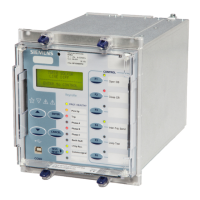
